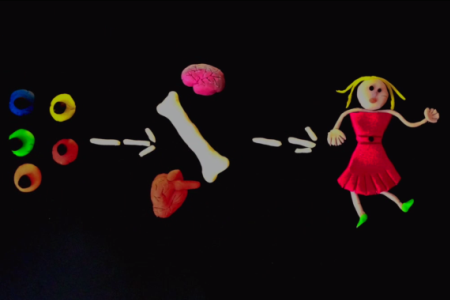Nanokicking research stars at Royal Society exhibition
Published: 4 July 2016
Nanokicking stem cell research at the University of Glasgow will play a starring role at a prestigious Royal Society Summer Exhibition.
Nanokicking stem cell research at the University of Glasgow will play a starring role at a prestigious Royal Society Summer Exhibition, starting on Monday (July 4).
Biologists from the Centre for Cell Engineering at the University of Glasgow, and gravity wave physicists from the University of the West of Scotland, will be presenting an exhibit showcasing Nanokicking - the stem cell precision medicine technique which stimulates stromal stem cells to grow new bone tissue.
Nanaokicking , which is currently undergoing research trials at the University of Glasgow, uses nanovibrations which create new bone cells by turning on switches within stromal cells in the laboratory so new bone cells can grow.
Glasgow scientists have invented the new way of flicking the switches on and off, called nanokicking. When bone stem cells are given small vibrations, thousands a second, the cell switches are turned on and the cell spreads out slowly turning into bone tissue. These cells can then be used in bone grafts and other bone related surgery.
Professor Matthew Dalby, Professor of Cell Engineering (Institute of Molecular Cell and Systems Biology) at the University of Glasgow, said: “Bone is the second most transplanted tissue after blood and is in short supply.
“Nanokicking allows us to use a tissue engineering approach to making bits of bone in the lab that could be used to increase the supply of graft and help enable surgeries where bone quality is poor or implants need further stabilisation.”
He continued: “The research is still at the validation stage. We have to understand how our living bone graft compares to synthetic, non-living, alternatives and then, as it is an advanced cell therapy we have to start working through the regulatory process. We have started to collaborated with the Scottish Nation Blood Transfusion Service to help us to do this, but even ambitiously this is 5 years off first human trial.”
The nanokicking research, which started in 2010, is funded by the Engineering and Physical Sciences Research Council (EPSRC) and Biotechnology and Biological Sciences Research Council (BBSRC). It received around £1M jointly from BBSRC and EPSRC.
The funding has enabled the research team to scale up the bioreactor, to make bioreactor dedicated consumables and to improve the quality of the bone graft produced.
Professor Dalby explained: “We hope that this research can lead to an off-the-shelf solution to demand for living bone graft. This demand might be within the NHS to deal with both elective and trauma surgeries but could also be worldwide to supply high-quality bone graft to hard-to-reach places.
“Further, we are developing acoustic nanokicking and while this is in very early stage development, we hope this will be used to apply nanokicking directly to patients to help bone healing.”
The University of Glasgow and the University of the West of Scotland teams have worked hard to design the exhibit and make the video. It is hoped their social media activity and the video they have produced will help engage and excite the public about the positive benefits of nanokicking
For more information contact the University of Glasgow Communications and Public Affairs Office. Tel: 0141 330 3535 / media@glasgow.ac.uk
First published: 4 July 2016
<< July

